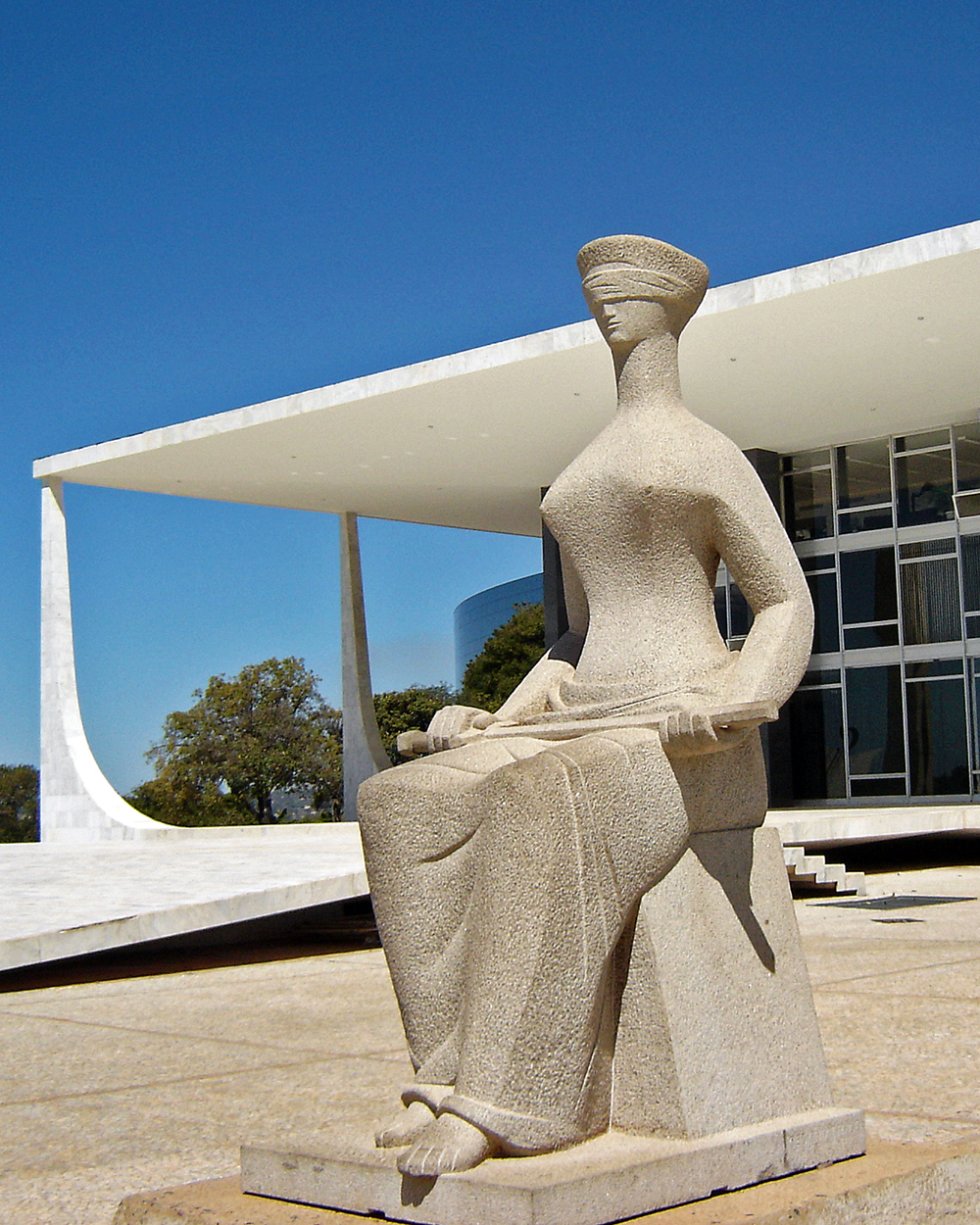|
Vaquejada
The vaquejada is a sport typical to the Nordeste region of Brazil, in which two cowboys ("vaqueiros") on horseback pursue a bull, seeking to pin it between the two horses and direct it to a goal (often consisting of chalk marks), where the animal is then knocked over. On October 6, 2016, the Brazilian Supreme Court ruled that the vaquejada is illegal and against the Brazilian Constitution. The subject came into matter when the Government of the State of Ceará approved a state law regarding the practice. The General Attorney appealed against it to the Supreme Court, stating in the lawsuit that the animals where treated with cruelty. In its favor, the Government of Ceará sustained that it was a cultural event and represented an important part of local economy. According to the Government of Ceará, the vaquejada creates over 200 thousand jobs. The city with the largest vaquejada in the world is Serrinha, in Bahia Bahia ( , , ; meaning "bay") is one of the 26 state ... [...More Info...] [...Related Items...] OR: [Wikipedia] [Google] [Baidu] |
Northeast Region, Brazil
The Northeast Region of Brazil ( pt, Região Nordeste do Brasil; ) is one of the five official and political regions of the country according to the Brazilian Institute of Geography and Statistics. Of Brazil's twenty-six states, it comprises nine: Maranhão, Piauí, Ceará, Rio Grande do Norte, Paraíba, Pernambuco, Alagoas, Sergipe and Bahia, along with the Fernando de Noronha archipelago (formerly a separate territory, now part of Pernambuco). Chiefly known as ''Nordeste'' ("Northeast") in Brazil, this region was the first to be colonized by the Portuguese and other European peoples, playing a crucial role in the country's history. ''Nordestes dialects and rich culture, including its folklore, cuisines, music and literature, became the most easily distinguishable across the country. To this day, ''Nordeste'' is known for its history and culture, as well as for its natural environment and its hot weather. ''Nordeste'' stretches from the Atlantic seaboard in the northeast ... [...More Info...] [...Related Items...] OR: [Wikipedia] [Google] [Baidu] |
Supreme Federal Court
The Supreme Federal Court ( pt, Supremo Tribunal Federal, , abbreviated STF) is the supreme court (court of last resort) of Brazil, serving primarily as the Constitutional Court of the country. It is the highest court of law in Brazil for constitutional issues and its rulings cannot be appealed. On cases involving exclusively non-constitutional issues, regarding federal laws, the highest court is, by rule, the Superior Court of Justice (Brazil), Superior Court of Justice. History The court was inaugurated during the Colonial Brazil, colonial era in 1808, the year that the royal family of Portugal (the House of Braganza) arrived in Rio de Janeiro. It was originally called the House of Appeals of Brazil (). The proclamation of the Brazilian Declaration of Independence and the adoption of the Brazilian Constitution of 1824, Imperial Constitution in 1824 preceded the establishment of the Supreme Court of Justice () in 1829. With the first Constitution of Brazil, Constitution of th ... [...More Info...] [...Related Items...] OR: [Wikipedia] [Google] [Baidu] |
Constitution Of Brazil
The Constitution of the Federative Republic of Brazil ( pt, Constituição da República Federativa do Brasil) is the supreme law of Brazil. It is the foundation and source of the legal authority underlying the existence of Brazil and the federal government of Brazil. It provides the framework for the organization of the Brazilian government and for the relationship of the federal government to the states, to citizens, and to all people within Brazil. Overview The current Brazilian Constitution is the seventh enacted since the country's independence in 1822, and the sixth since the proclamation of the republic in 1889. It was promulgated on 5 October 1988, after a two-year process in which it was written from scratch. History The current Constitution of Brazil was drafted as a reaction to the period of military dictatorship, and sought to guarantee individual rights and restrict the state's ability to limit freedom, to punish offences and to regulate individual life. Among ... [...More Info...] [...Related Items...] OR: [Wikipedia] [Google] [Baidu] |
Ceará
Ceará (, pronounced locally as or ) is one of the 26 states of Brazil, located in the northeastern part of the country, on the Atlantic coast. It is the eighth-largest Brazilian State by population and the 17th by area. It is also one of the main tourist destinations in Brazil. The state capital is the city of Fortaleza, the country's fourth most populous city. The state has 4.3% of the Brazilian population and produces 2.1% of the Brazilian GDP. Literally, the name ''Ceará'' means "sings the jandaia". According to José de Alencar, one of the most important writers of Brazil and an authority in Tupi Guaraní, ''Ceará'' means turquoise or green waters. The state is best known for its extensive coastline, with of sand. There are also mountains and valleys producing tropical fruits. To the south, on the border of Paraíba, Pernambuco and Piauí, is the National Forest of Araripe. Geography Ceará has an area of . It is bounded on the north by the Atlantic Ocean, ... [...More Info...] [...Related Items...] OR: [Wikipedia] [Google] [Baidu] |
Serrinha
:''"Serrinha" is also the name of a microregion in Bahia.'' Serrinha is a city in the state of Bahia, in eastern Brazil. Geography The population is 81,286 people. The mayor is Adriano Lima of the Brazilian Social Democracy Party. The city is the seat of the Roman Catholic Diocese of Serrinha The Roman Catholic Diocese of Serrinha ( la, Dioecesis Serrignensis) is located in the Brazilian state of Bahia. It is a suffragan diocese of the Archdiocese of Feira de Santana. History The diocese was erected on 21 September 2005 with territor .... History The town's founding date is June 13, 1876. References External links * Municipalities in Bahia {{Bahia-geo-stub ... [...More Info...] [...Related Items...] OR: [Wikipedia] [Google] [Baidu] |
Bahia
Bahia ( , , ; meaning "bay") is one of the 26 Federative units of Brazil, states of Brazil, located in the Northeast Region, Brazil, Northeast Region of the country. It is the fourth-largest Brazilian state by population (after São Paulo (state), São Paulo, Minas Gerais, and Rio de Janeiro (state), Rio de Janeiro) and the 5th-largest by area. Bahia's capital is the city of Salvador, Bahia, Salvador (formerly known as "Cidade do São Salvador da Bahia de Todos os Santos", literally "City of the Saint Savior of the Bay of All the Saints"), on a Spit (landform), spit of land separating the Bay of All Saints from the Atlantic. Once a monarchial stronghold dominated by Agriculture in Brazil, agricultural, Slavery in Brazil, slaving, and ranching interests, Bahia is now a predominantly Working class, working-class industrial and agricultural state. The state is home to 7% of the Brazilian population and produces 4.2% of the country's GDP. Name The name of the state derives from the ... [...More Info...] [...Related Items...] OR: [Wikipedia] [Google] [Baidu] |
Bullfighting
Bullfighting is a physical contest that involves a bullfighter attempting to subdue, immobilize, or kill a bull, usually according to a set of rules, guidelines, or cultural expectations. There are several variations, including some forms which involve dancing around or leaping over a cow or bull or attempting to grasp an object tied to the animal's horns. The best-known form of bullfighting is Spanish-style bullfighting, practiced in Spain, Portugal, Southern France, Mexico, Colombia, Ecuador, Venezuela, and Peru. The Spanish Fighting Bull is bred for its aggression and physique, and is raised free-range with little human contact. The practice of bullfighting is controversial because of a range of concerns including animal welfare, funding, and religion. While some forms are considered a blood sport, in some countries, for example Spain, it is defined as an art form or cultural event, and local regulations define it as a cultural event or heritage. Bullfighting is illegal in ... [...More Info...] [...Related Items...] OR: [Wikipedia] [Google] [Baidu] |
Bull Sports
A bull is an intact (i.e., not castrated) adult male of the species ''Bos taurus'' (cattle). More muscular and aggressive than the females of the same species (i.e., cows), bulls have long been an important symbol in many religions, including for sacrifices. These animals play a significant role in beef ranching, dairy farming, and a variety of sporting and cultural activities, including bullfighting and bull riding. Due to their temperament, handling requires precautions. Nomenclature The female counterpart to a bull is a cow, while a male of the species that has been castrated is a ''steer'', '' ox'', or ''bullock'', although in North America, this last term refers to a young bull. Use of these terms varies considerably with area and dialect. Colloquially, people unfamiliar with cattle may refer to both castrated and intact animals as "bulls". A wild, young, unmarked bull is known as a ''micky'' in Australia.Sheena Coupe (ed.), ''Frontier Country, Vol. 1'' (Weldon Ru ... [...More Info...] [...Related Items...] OR: [Wikipedia] [Google] [Baidu] |
Sports Originating In Brazil
Sport pertains to any form of Competition, competitive physical activity or game that aims to use, maintain, or improve physical ability and Skill, skills while providing enjoyment to participants and, in some cases, entertainment to spectators. Sports can, through casual or organized participation, improve participants' physical health. Hundreds of sports exist, from those between single contestants, through to those with hundreds of simultaneous participants, either in teams or competing as individuals. In certain sports such as racing, many contestants may compete, simultaneously or consecutively, with one winner; in others, the contest (a ''match'') is between two sides, each attempting to exceed the other. Some sports allow a "tie" or "draw", in which there is no single winner; others provide tie-breaking methods to ensure one winner and one loser. A number of contests may be arranged in a tournament producing a champion. Many sports leagues make an annual champion by ar ... [...More Info...] [...Related Items...] OR: [Wikipedia] [Google] [Baidu] |





